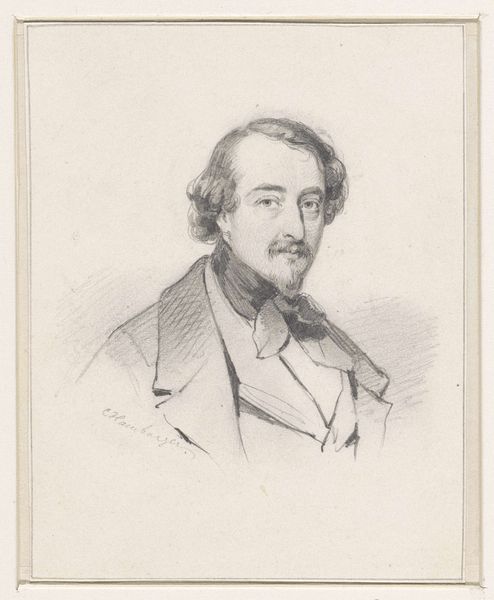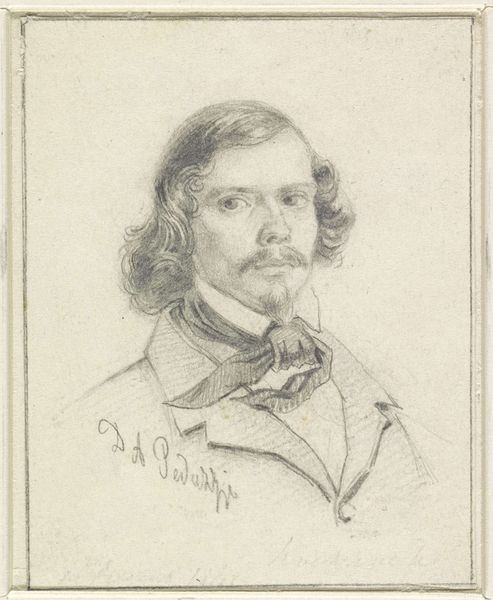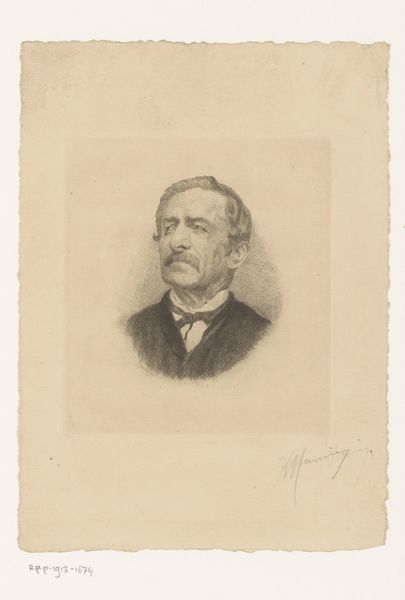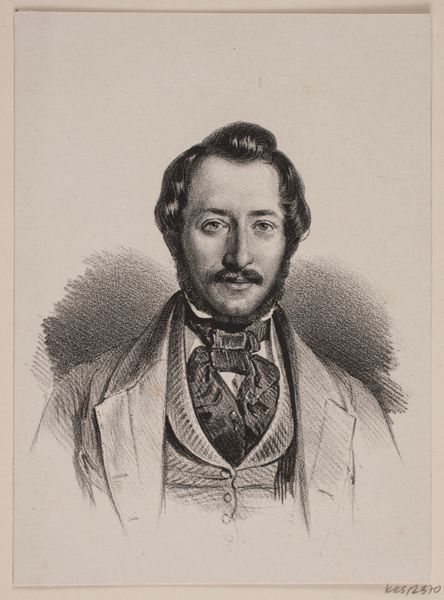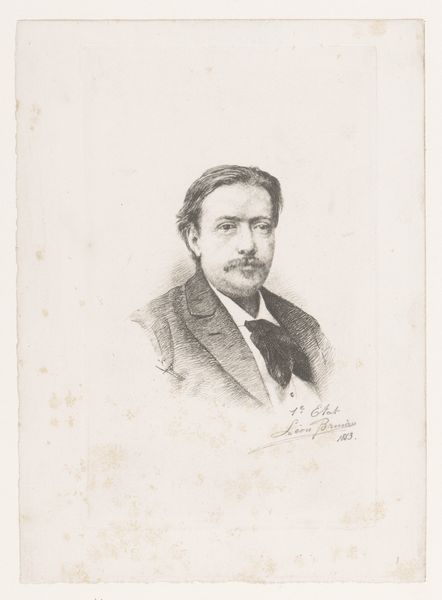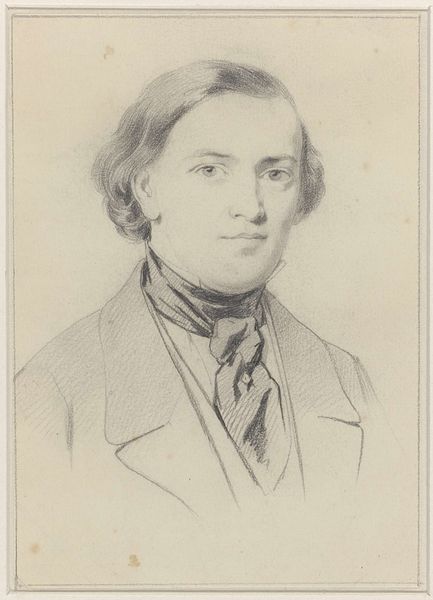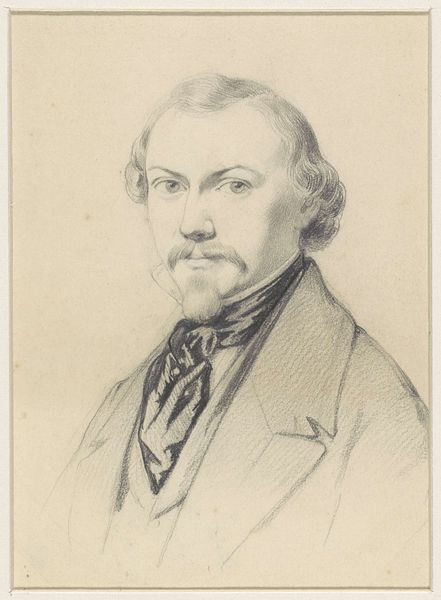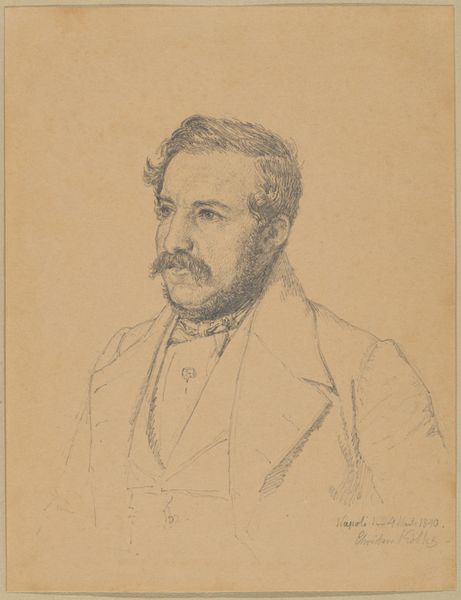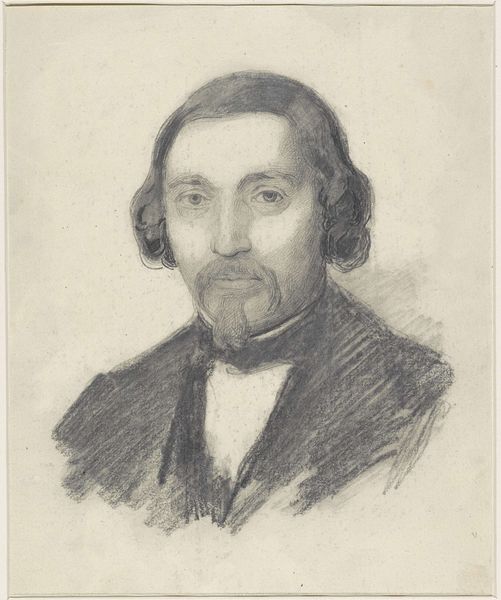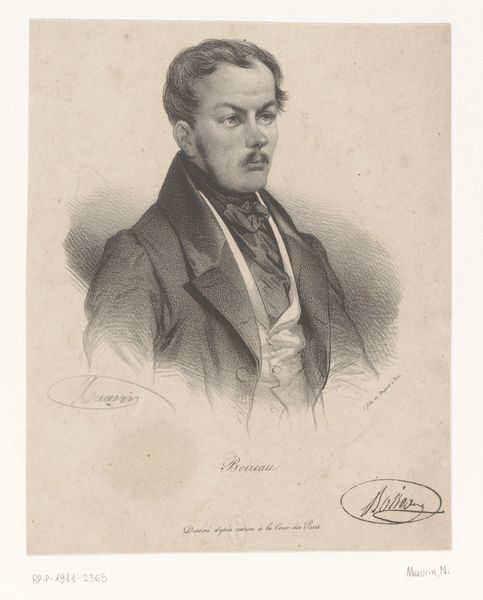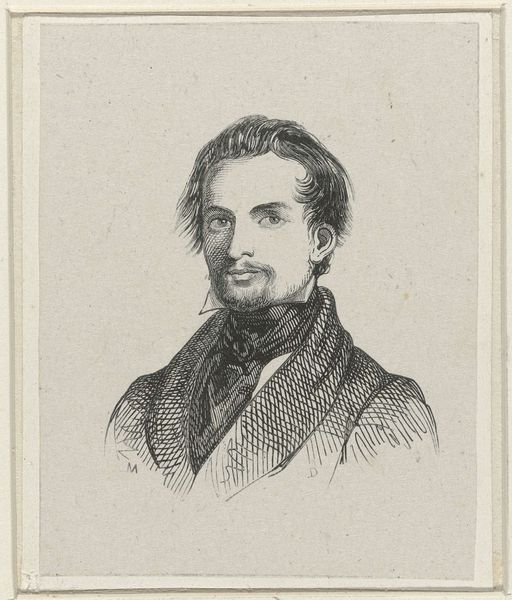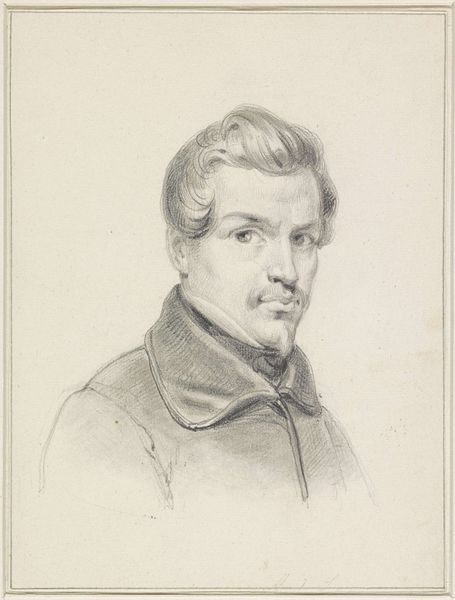
drawing, pencil
#
portrait
#
drawing
#
pencil
#
realism
Dimensions: height 161 mm, width 121 mm
Copyright: Rijks Museum: Open Domain
Editor: Here we have "Portret van Charles Leickert," a pencil drawing from 1853 by Moritz Calisch. It’s strikingly… straightforward, almost documentary, in its presentation. What’s your read on this piece? Curator: Indeed. This portrait gives us a glimpse into the artistic circles and their relationship to public representation during the mid-19th century. Calisch’s rendering of Leickert, a landscape painter, is quite telling. How do you think this type of portrait served its subjects and the broader public? Editor: I suppose it cemented their status? Like a visual biography, displayed perhaps in their home or gifted. What stands out is the unidealized depiction. He looks… normal. Curator: Precisely. This realism, although subtle, marked a shift in how artists were publicly perceived. Portraits weren’t just for nobility anymore; the rising middle class and successful artists wanted to assert their presence in society. Note the emphasis on attire. Does that communicate something about Leickert? Editor: It suggests respectability, maybe even ambition. He's clearly presenting himself as a professional. It’s not revolutionary, but you can sense a changing social landscape, can’t you? Curator: Exactly. The seemingly simple portrait reveals much about the artist’s aspiration for social standing and how visual culture played a role in defining it. It demonstrates how artistic circles tried to elevate their societal roles. Editor: I see what you mean; beyond a likeness, it's a statement about belonging and rising influence. I never thought of it like that. Thanks! Curator: Glad I could help. It all ties back to understanding the societal forces that shape what we see, and why we see it.
Comments
No comments
Be the first to comment and join the conversation on the ultimate creative platform.
